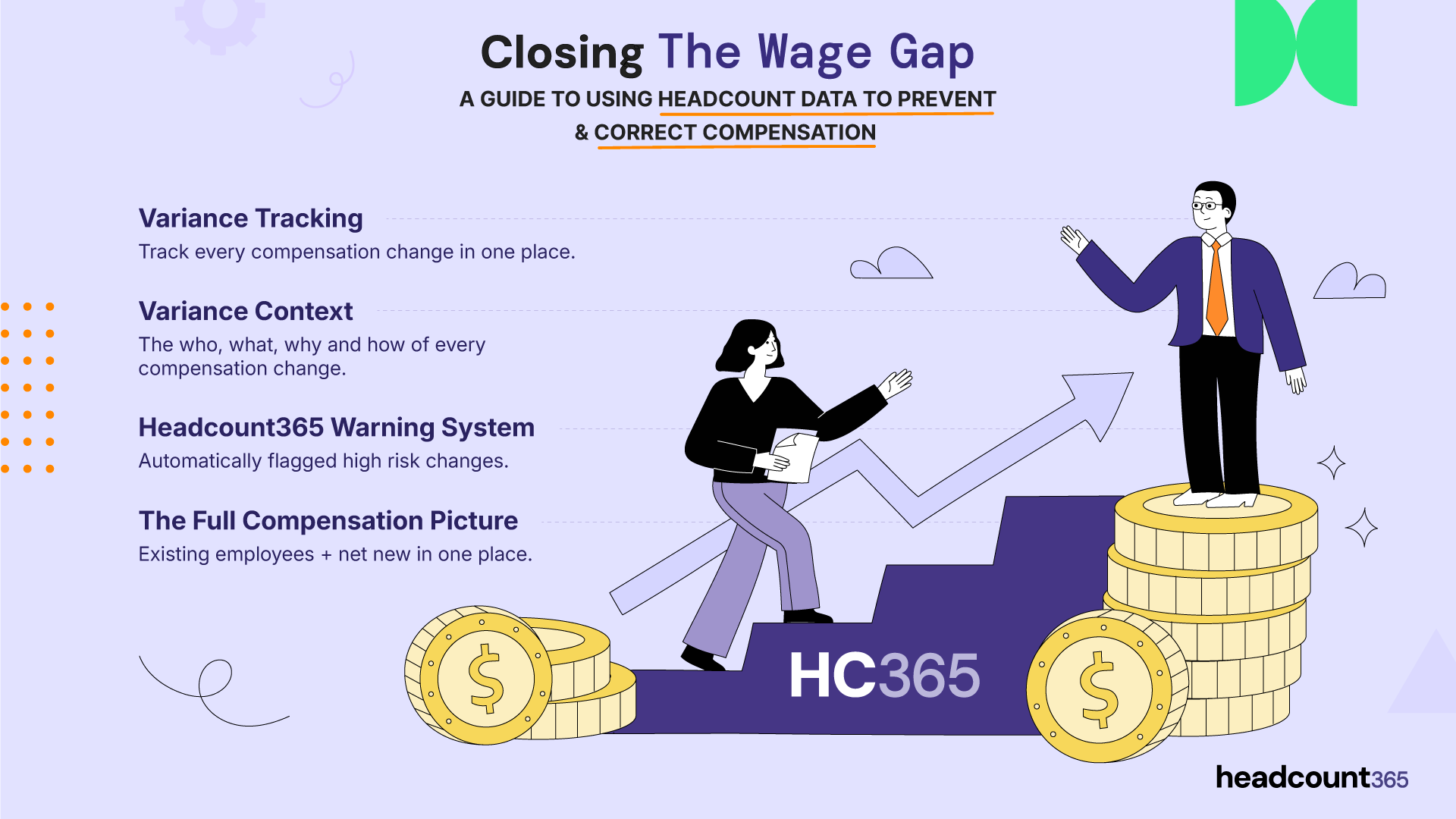Unified Headcount Data is Critical to Closing the Wage Gap
Table of Contents
Why Is There a Wage Gap?
During my time at Uber, an investigation revealed a gap along lines of different protected classes, quantified largely with compensation variance.
There was no unified system to track this compensation variance, its origin, or exactly how big this problem was. Data about above-band offer accepts, off-cycle promotions, and equity variance was stored in disparate FP&A, HRIS, and ATS systems. Approvals for changes to existing budgets were lost in email and Slack. Managers did what they needed to meet growth goals, creating massive variance in the process, creating a monster that ultimately cost the CEO his Job.
This is solvable. Part of my passion for headcount365 is solving these problems before they start, by unifying this data across multiple systems so that executives can stop these problems before they start.
Without Preventative Data, Solving The Wage Gap is Reactive, Expensive, and Time Consuming
Today, companies wait until there is a wage gap to fix the problem, rather than preventing it in the first place. They fix this wage gap using static compensation reviews or after-the-fact audits. This reactive strategy requires heavy investigation through multiple spreadsheet "snapshots” to see how compensation variance originates over time.
Prevents the Wage Gap with 4 Key Headcount Metrics
When you store headcount data in spreadsheets & disparate systems, you’re missing critical information to help identify this problem.
Compensation Variance Tracking | Budget vs actuals
"Everyone has a plan until they get punched in the face" - Mike Tyson.
When the Annual budget is set at the beginning of the year, the compensation is well thought out. As hiring managers “NEED” that one candidate, or don’t want to lose a top performer, one-off exceptions are made. Approvals in meetings, Slack, or email can sometimes never even make it back to the compensation team, and after so many changes, you begin to be that frog in hot water.
Key Data Points:
Job Offer Variance - Offering compensation out of band.
Off-Cycle Promotions - Counteroffers to top performers.
Horse Trading Variance - Compensation Variance created from hiring managers combining, splitting, or changing role start dates.
Any time one employee has the same title as another, and has different compensation, you better be able to explain it. Tracking the amount of variance & where it’s coming from is just the first step of solving the Wage Gap.
Variance Context | What are the origins of the Wage Gap?
The Wage Gap doesn’t start and end with hiring manager-created variance. In fact, we reward managers who “get it done” for their people or department, and variance can be a systemic product of a broader compensation strategy. Using headcount365, you have an activity feed on every headcount, linked from the position creation on the headcount plan, through exit. These data points give critical context for why a wage gap, if any, exists in your business.
Key Data Points:
Exceptions by Position - If every offer is out of band, for a given role, maybe it’s the band.
Timing of Variance - If your hiring managers are using job offers to create variance, maybe they need corrective action.
Replacement Variance - What is the relationship of compensation for backfills?
Variance Reasoning - Data collected from the requestor about the reason for change.
The Full Compensation Picture | Positions from creation, through termination
Today, it’s nearly impossible to see compensation progression from pre-hire through termination without a pristine ERP implementation with data quality protections, and/or spreadsheets with a proprietary unique identifier system. Even if you did have good data, you’d then need hyper-advanced spreadsheet skills, or a team to process it through a BI tool.
Key Data Points:
Progression by Tenure - How does tenure impact the wage gap?
Variance by Aggregate - How do different hiring managers contribute to the wage gap between hiring & workforce behaviors?
Variance across Current + Net New - Variance of any individual department, cost center, division, etc, for all roles.
Backfill Variance - Wage gap issues created from backfill salary variance.
Trade Variance - How is compensation from backfills or roles not hired redistributed to the team?
Headcount365 Wage Gap Warning System | Prevent the Wage Gap before It Starts
The Headcount365 Warning System proactively & automatically flags high-risk changes that could widen the wage gap, such as below-benchmark offers or inconsistent salary adjustments. These alerts help leaders catch potential issues before they’re locked in, giving them the chance to fix disparities at the source. Every action is tracked in an activity feed, automatically tagged with high-risk changes, and summarized by AI.
Companies who use headcount365 can now tackle the wage gap proactively, correcting high-risk changes as they arise, rather than letting them build into problems that require massive effort & investment to correct in the future.
Headcount365 Helps Leaders Close the Wage Gap
Wage gaps don’t close themselves. They require visibility, context, and proactive intervention — and Headcount365 is the only platform built to do all three. With tools to track every compensation change, understand their context, flag high-risk actions, and view the full compensation landscape, leaders can finally prevent wage disparities from forming in the first place. If you want to close the wage gap, you need a system that was built to see it coming.

